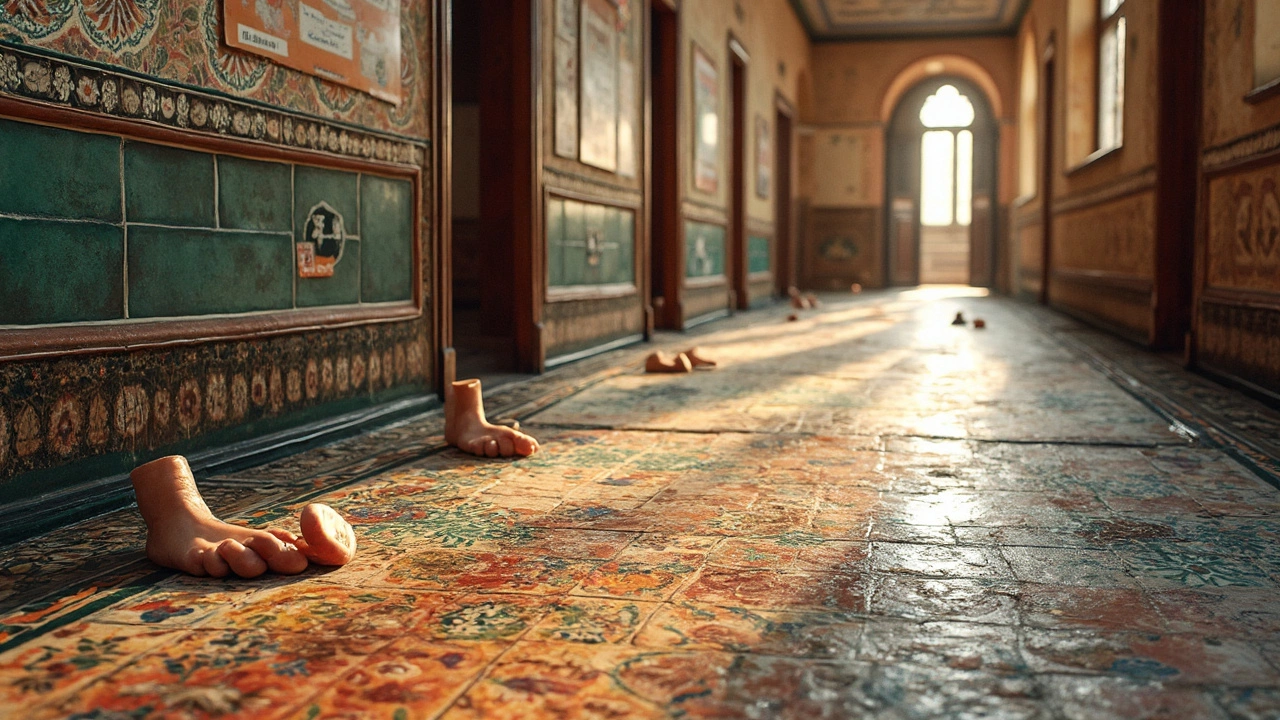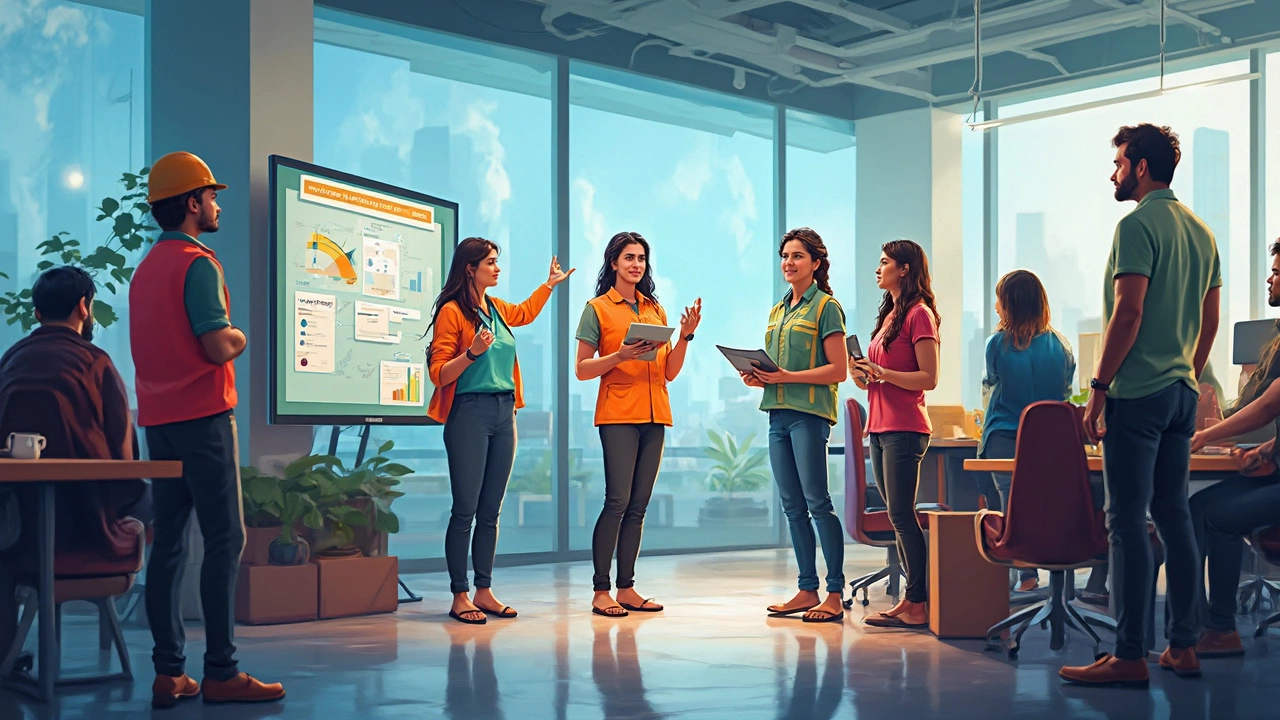Ever wondered if you could get in trouble for strolling around barefoot? Strangely enough, the idea of restricted footwear isn't as clear-cut as we might like to think. Whether padding around home or considering a shoeless day at work, it's good to know the rules.
While many assume that being barefoot violates health codes, the truth is a bit more nuanced. Not every place has explicit rules against it. However, if you're working in environments with sharp objects, chemicals, or heavy machinery, common sense — and often legal requirements — kick in. It's not just about you getting injured, but also about creating a safe and professional workplace.
Let’s break down whether ditching shoes is just a harmless habit or a no-go under certain conditions. This will shed some light on what you should know if you decide to let your feet breathe freely.
- Understanding Health Codes
- The Risks of Going Barefoot
- Legal Requirements in Workplaces
- Safety Tips for Feet
- Common Myths and Facts
Understanding Health Codes
When talking about health codes and being barefoot, it quickly becomes apparent that the rules aren't as cut-and-dry as you'd expect. Health codes were initially designed to keep people safe, prevent injuries, and ensure that environments, especially workplaces, are hygienic and up to safety standards. But do they strictly say you can't be barefoot?
It's interesting to note that most health codes don't specifically ban being barefoot. Instead, they point towards doing whatever reasonably protects workers. So, if going barefoot poses a risk of injury or contamination, it's naturally considered a bad idea. But this often depends on the environment. For instance, walking around barefoot in an office is different from doing so in a kitchen or factory.
Clarity on Health Codes
Generally speaking, health code violations happen when guidelines aimed at ensuring safety are ignored. Surprisingly, many of these codes focus more on the presence of protective gear when needed rather than an outright ban on being shoeless. That means while there's no universal rulebook, employers might enforce their policies to align with best practices.
Workplace Examples
- Food Industry: Here, going barefoot practically screams violation. Hinged on hygiene, the goal is to prevent any form of contamination.
- Construction Sites: Think sharp objects, heavy equipment. Here, protecting feet with suitable work shoes is a no-brainer. It’s all about preventing accidents.
So, while there isn’t a “no barefoot” rule etched into every health code, understanding the intention behind these codes can help make smarter choices. Employers often take additional steps, drafting specific policies depending on job roles and associated risks.
The Risks of Going Barefoot
Walking into a workplace barefoot might seem freeing, but it comes with its own set of risks. First off, let's talk about injuries. Without proper work shoes, you're exposed to hazards like sharp objects or slippery floors. Imagine stepping on a stray nail or slipping on a freshly cleaned tile. Ouch, right?
Then there's a sanitation issue. Bare feet can spread germs, especially in places like kitchens or medical facilities where cleanliness is critical. Ever wonder why you wear those goofy shoe covers at the dentist? It's all about keeping things sterile.
Health Concerns
Going shoeless might also lead to health issues. Things like athlete’s foot or plantar warts thrive in warm, moist environments—like the insides of your shoes post-sweat session. But going barefoot in public spaces invites these uninvited guests directly.
Legal Considerations
Another point to ponder is liability. If a mishap occurs because someone decided to skip shoes, who’s to blame? Many workplaces have safety regulations that require protective footwear, not just for employees' safety, but to avoid legal hurdles if things go south.
It's not just about being extra cautious — it's the law in some industries. Reacting after an accident is what no one wants, so knowing and respecting the guidelines beforehand is key.
In a nutshell, while going barefoot might seem like a harmless choice, in a workplace setting, it opens up a can of worms. Better stick to the safe side!

Legal Requirements in Workplaces
In many workplaces, following safety regulations is a must, and these often dictate what you can and can't wear on your feet. It's not just about keeping your toes cozy.
If you're working in a spot like a restaurant or a construction site, it's no surprise that going barefoot isn't just frowned upon—it's usually a clear violation of health codes. These rules are in place to keep everyone safe from nasty spills, falling objects, or accidental needle pokes.
Occupational Safety and Health Standards
Under the Occupational Safety and Health Administration (OSHA) guidelines, proper footwear is emphasized in various industries to prevent injuries. OSHA's standards are all about minimizing risks to workers, which means open-toed shoes, sandals, or being barefoot isn't in the cards for many jobs.
Here's a quick breakdown of industries with specific footwear regulations:
- Construction: Steel-toed boots are often required to protect against falling debris and other hazards.
- Restaurants: Non-slip shoes are a standard to avoid slips on greasy floors.
- Healthcare: Closed-toe shoes are essential to shield against sharp objects or spills.
Why the Fuss?
Many of these rules are shaped by past incidents where lack of proper footwear led to workplace injuries. Having strict standards helps to reduce these risks and creates a safer environment overall.
Understanding the Exceptions
While most places enforce strict footwear rules, some creative spaces might turn a blind eye as long as safety isn't compromised. However, it's rare. Always check your workplace's policies ahead of time.
| Industry | Common Footwear Requirement |
|---|---|
| Construction | Steel-toed boots |
| Restaurant | Non-slip shoes |
| Healthcare | Closed-toe shoes |
If you're unsure about the specifics, a quick chat with a supervisor or a peek into the employee handbook can clear things up. And remember, when it comes to safety, better to have it and not need it than need it and not have it!
Safety Tips for Feet
Whether you're a fan of feeling the earth beneath your feet or just caught up in shoeless spontaneity, keeping your feet safe shouldn't slip your mind. Trust me, nobody wants to turn a simple barefoot experience into an ouchy ordeal.
Protect Your Soles
If you're in places like the kitchen or garage, it’s smart to have some kind of foot covering handy. Broken glass or stray tools don't care how tough you think your feet are. In workplaces where hazards lurk, proper footwear is not just suggested, it’s often required.
Keep It Clean
Dust, bacteria, and who-knows-what-else can latch onto your feet. Regular washing is a must to fend off infections. Just like washing hands often, scrubbing your feet should be part of your routine.
Mind Your Step
- Always check the surface you’re walking on. Slippery floors or rocky paths can turn into a health hazard fast.
- Special occasions, such as hiking or biking, call for shoes that offer foot support and protection.
It's All About Support
While going barefoot feels freeing, it'll lack the support shoes provide. If you find your feet aching after too long without shoes, it could be a sign to grab some comfy sneakers. Supports like insoles could also help provide relief.
Regular Check-ups
Give your feet a regular inspection. Cracks, blisters, or unexplained pains are worth paying attention to. Catching problems early can save a heap of trouble later down the line.
Being mindful of these tips can ensure a comfortable and healthy barefoot experience, whether at work or lounging at home. It's all about making smart steps for those feet of yours.

Common Myths and Facts
There's a lot of chatter around the idea that being barefoot is a health code violation, but there's more fiction in that belief than fact. Let's set the record straight.
Myth 1: Being Barefoot is Always Against Health Codes
First up, the myth that being barefoot is always a violation of health code. Not true! In reality, health codes don't typically address going shoeless unless it poses a clear safety risk or a sanitary issue. Think about it—different work environments have different rules. In most retail or office spaces, shoes serve more as a cultural norm rather than a legal necessity.
Fact 1: Safety Regulations Vary by Industry
Here's where the truth shines: safety regulations depend heavily on the industry. In healthcare, food service, or industrial settings, you'll likely encounter strict shoe requirements to prevent contamination or injuries. It's all about maintaining a safe and clean environment for everyone.
Myth 2: You're Evicted from Stores for Being Barefoot
A quirky one—many think walking into a store without shoes is illegal. In fact, while it might get you a few odd looks, there aren’t actually laws against entering shops barefoot. However, businesses do have the right to enforce their own dress codes for the comfort and safety of all patrons.
Fact 2: Workplace Shoe Requirements Aren't Universal
Did you know not every job has a mandatory work shoes policy? It's true! Many tech firms, for instance, value comfort over convention, and have a laid-back footwear approach. Of course, it's always good to check the employee handbook before kicking off your shoes.
| Industry | Shoe Requirement |
|---|---|
| Construction | Mandatory Steel-Toe Boots |
| Office | Casual/Formal Depending on Company |
| Food Service | Slip-Resistant Shoes |
The key takeaway here is to always align with your specific workplace's guidelines. What holds true in one setting might not apply in another.

